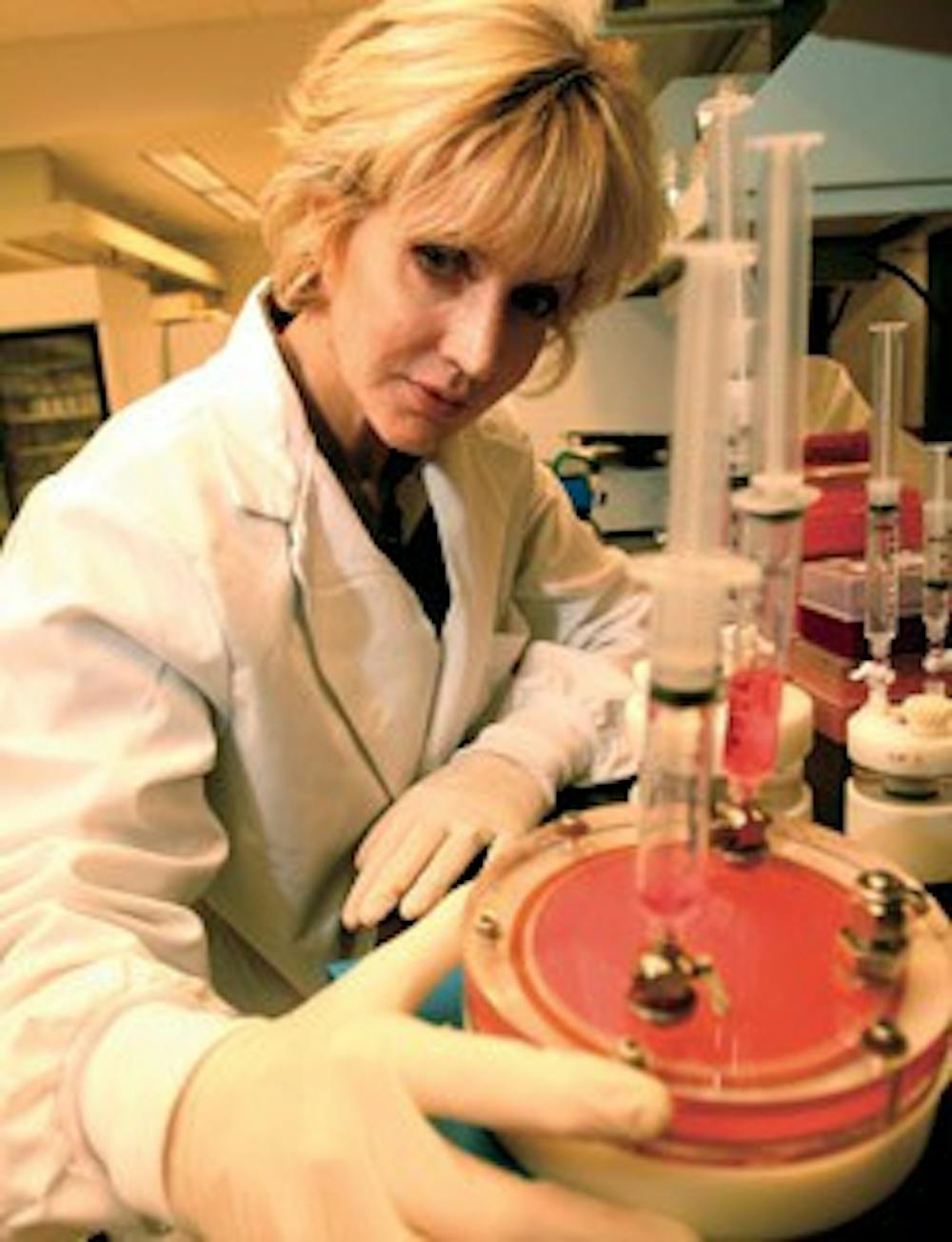ASU Professor Cheryl Nickerson points to a photo of a discolored patch on an otherwise white wall of the International Space Station.
"You can see it looks dingy, a little dirty right there," she says. "That's mold."
Nickerson, a professor in the Biodesign Institute Center for Infectious Diseases, is studying the effect of spaceflight on bacteria and disease-causing microorganisms.
Her most recent experiment blasted off in September onboard NASA's Atlantis space shuttle.
Nickerson sent two types of disease-causing bacteria and a common fungus called Candida albicans on the mission.
"This study is the first of its kind," said James Wilson, an ASU professor on Nickerson's team. "It helps us to get some critical information as to crew health safety on flights."
Now, more than three weeks after Atlantis touched down in Florida, Nickerson is excited about the results she's observed so far.
"Space flight is actually known to cause key changes to human and microbial cells that are directly relevant to human disease," she said.
While scientists already know spaceflight can have an adverse effect on human immune systems, they are still investigating how that happens, Nickerson said.
The microorganisms Nickerson sent to space grew to higher numbers than they would have on Earth. The fungus cells also changed their shape and other properties.
Because the study is in its early stages, Nickerson said she couldn't comment with scientific accuracy on the findings. She said her team is looking into gene expression changes and whether or not the microorganisms became more virulent, or potent, due to spaceflight.
"I can tell you there's a lot of really interesting changes that spaceflight causes to these cells," she said. "We don't know yet the mechanisms by which they are occurring."
The photo of the mold growing in the International Space Station was taken in an area where astronauts were exercising. They would hang their sweaty towels on the wall after exercising, which eventually led to the mold, Nickerson said.
"Wherever man goes, microbes go," she said. "They're up there; they can cause problems."
In NASA's 1970 Apollo 13 mission, known mainly for its emergency landing on Earth, one crewmember suffered from a urinary tract infection caused by the fungus Candida albicans.
Infectious diseases pose a great risk to astronauts, Nickerson said, because the crew is living in close chambers and recycling their air and water.
Plus, with international crews, astronauts are carrying microbes from the flora and fauna of their own native lands, which other crewmembers may not be accustomed to, she added.
"When you add in the fact that infectious disease is the leading cause of death on Earth, you start realizing this is a problem we need to address to ensure health and safety of the crew during spaceflight," Nickerson said.
NASA funded the project with a grant in 2001 of just less than $1 million.
Nickerson, who was at Tulane University when she started the project, said the additional cost to fly the experiment amounted to about $10,000 per pound, or a total of $40,000.
Nickerson brought the project to ASU in January.
The cost and difficulty of launching a project into space often conflicts with science's need for repetition, Nickerson said. For that reason, NASA has developed special culture chambers for microorganisms that simulate spaceflight conditions. Nickerson uses those chambers, called bioreactors, in her lab at the Biodesign Institute.
She said she's looking forward to flying a project again if the opportunity arises.
Until then, Nickerson and her team are still studying the results from the Atlantis mission and simulating experiments in the lab.
She hopes the research will lead to breakthroughs not only benefiting the health of astronauts but of all humans grounded on Earth as well.
An understanding of how spaceflight affects human immune systems and disease-causing organisms could lead to innovative new ways of developing vaccines and treatments for diseases, Nickerson said.
"This study holds real potential to translate to health advantages for humans here on the ground," she said.
Reach the reporter at: annalyn.censky@asu.edu.




